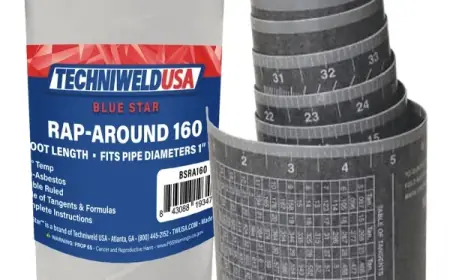Allen-Bradley MicroLogix 1400 PLC Fault Codes [2025]
Explore the latest Allen-Bradley MicroLogix 1400 PLC fault codes [2025]. Learn error meanings, troubleshooting tips, and solutions for smooth operations.
![Allen-Bradley MicroLogix 1400 PLC Fault Codes [2025]](https://joripress.com/uploads/images/202508/image_870x_68a6db59b909f.webp)
Introduction
In the world of industrial automation, every second of downtime can cost thousands of dollars. That’s why fault codes play such an important role in programmable logic controllers (PLCs). These diagnostic codes act like the controller’s own built-in language for reporting problems, pointing engineers and technicians directly to the issue instead of leaving them guessing.
By understanding fault codes, maintenance teams can quickly identify what went wrong, decide how serious the problem is, and take corrective action without unnecessary delays. This not only helps reduce downtime but also keeps production lines running smoothly and efficiently.
Among the many PLCs in use today, the Allen-Bradley MicroLogix 1400 is a favorite in small-to-mid-scale automation projects. Known for its reliability and communication features, this PLC is used across industries such as manufacturing, utilities, and packaging. However, like any controller, it can run into errors—and knowing how to interpret its fault codes can be the difference between a minor hiccup and a costly shutdown.
Types of Faults and Their Indications
The MicroLogix 1400 reports two main categories of faults: major and minor.
Major Faults occur when the controller encounters a serious problem that prevents it from running safely. Examples include corrupted programs, invalid data handling, or hardware failures. When a major fault happens, the PLC immediately stops all operations and the FAULT LED flashes red. This behavior is intentional—it prevents further damage or unsafe conditions until the underlying issue is fixed.
Minor Faults or Warnings, on the other hand, are less severe. They might be triggered by communication hiccups with an I/O module, small configuration mismatches, or other recoverable issues. In these cases, the PLC may still continue running, but it will log the fault to alert technicians. While not as disruptive as a major fault, ignoring these warnings can still lead to bigger problems if left unresolved.
Fault Code Breakdown
MicroLogix 1400 fault codes are displayed in a four-digit hexadecimal format. To someone unfamiliar, this might look confusing at first, but the structure makes them easy to decode once you understand the pattern.
The first two digits of the fault code point to the source or location of the issue, such as the module or card where the error occurred. The last two digits specify the exact error type.
For example, take the fault code 0289H:
-
The “02” indicates that the error is associated with the second module or card in the system.
-
The “89” tells you the specific type of fault. By checking the manual, technicians can see exactly what the error means and take action.
This structured approach helps maintenance teams quickly trace the origin of a problem instead of wasting time searching blindly.
Common Fault Codes and Meanings
Here are some examples of fault codes that MicroLogix 1400 users often encounter:
|
Fault Code (Hex) |
Meaning |
|
0x008 |
General hardware fault |
|
0x010 |
Illegal command or format |
|
0x020 |
Remote node communication problem |
|
0x030 |
Remote node missing or disconnected |
|
0x060 |
Function not allowed (command protection) |
|
0x080 |
Compatibility or communication issue |
|
0x229 |
Bad checksum (corrupted data received) |
|
0x303 |
Ethernet socket error |
These are just a handful of possible errors. The complete list, along with detailed explanations and corrective actions, can be found in the official Rockwell documentation. Keeping a copy of the manual handy is always a smart move for technicians working with these PLCs.
How to Clear Faults
Clearing faults on the Allen Bradley MicroLogix 1400 is usually a simple process, but it’s important to remember that pressing reset alone won’t solve the problem if the actual cause hasn’t been fixed. Resetting without addressing the issue will only bring the fault back again.
Here’s the proper way to clear a fault:
-
Press the ESC button to bring up the main menu.
-
Go to Advanced Settings > Fault Code.
-
Take note of the fault code that appears and look up its meaning in the manual.
-
For minor faults, you can often clear them by switching the controller between Program and Run mode or by using the display menu.
-
For major faults, fix the root issue first—for example, replace a damaged module, repair wiring, or correct corrupted logic—before attempting to reset.
To reduce the chance of repeated errors, it’s wise to install protective equipment such as surge suppressors or an uninterruptible power supply (UPS). These devices help shield the controller from sudden power fluctuations, which are a common cause of program loss and unexpected hardware issues.
Real-World Application
In manufacturing environments, every minute of downtime comes at a cost—not just in production delays but also in lost revenue and missed delivery deadlines. Take the example of a packaging plant where the MicroLogix 1400 encounters a major fault because of a corrupted program. If the maintenance team didn’t have fault codes to rely on, they’d need to spend hours troubleshooting every possible cause. With the fault code displayed, they can quickly pinpoint the error, reload the program, and restore operations in a fraction of the time.
Similarly, minor faults or warnings shouldn’t be ignored. A small communication issue with an I/O module might not stop production immediately, but it can be a sign of a bigger problem down the road. By paying attention to these alerts, technicians can schedule preventive maintenance, replace failing parts, or correct misconfigurations before they turn into costly breakdowns.
This real-world use of fault codes shows just how valuable they are for keeping plants running efficiently. Instead of guessing, teams can act with precision—saving both time and money.
Conclusion
Fault codes in the Allen-Bradley MicroLogix 1400 are more than just error messages—they’re powerful diagnostic tools that guide technicians toward faster troubleshooting and smarter decision-making. By understanding the difference between major and minor faults, learning how to decode fault codes, and knowing how to clear them safely, maintenance teams can minimize downtime and keep operations running efficiently.
While not every issue can be solved instantly, fault codes provide a clear starting point that reduces guesswork and speeds up recovery. For anyone working with the MicroLogix 1400, mastering these codes is essential for maintaining reliability, efficiency, and productivity on the plant floor.
Reach US
Asteam Techno Solutions Pvt. Ltd. was established in 2017 with a perspective to become a single-source supplier & solution provider for all the industrial electrical automation hardware and software solution needs. Armed with team of as keen as mustard skilled engineers with many years of experience working in the field of industrial automation and special purpose machines.
We provide solutions in Allen Bradley (Rockwell Automation), AVEVA (Formerly Wonderware), Siemens, Schneider, ABB, Phoenix Contact, MOXA, Advantech, and many more in India as well as globally.
Asteam Techno Solutions Pvt. Ltd. is AVEVA (Formerly Wonderware) Registered System Integrator providing sale/service/support and execute the HMI/SCADA, Historian/MES Solutions to End-user & OEM/System Integrator community for their diverse needs.
Leading single-source supplier & solution provider for industrial automation hardware and software solutions need.
Preferred wholesale supplier, stockiest & exporter of Programmable Logic Controller (PLC), Drive (VFD), HMI, Panel PC, SCADA, Profibus Connector, Cable, and many more automation products.
We serve OEM, Pharmaceuticals, Chemicals, Petrochemicals, oil & gas, Panel manufacturers along with our process equipment. Also, we deliver services to Food processing OEM, electrical industries & mechanical industries with our special purpose process components.
What's Your Reaction?
 Like
0
Like
0
 Dislike
0
Dislike
0
 Love
0
Love
0
 Funny
0
Funny
0
 Angry
0
Angry
0
 Sad
0
Sad
0
 Wow
0
Wow
0



















































